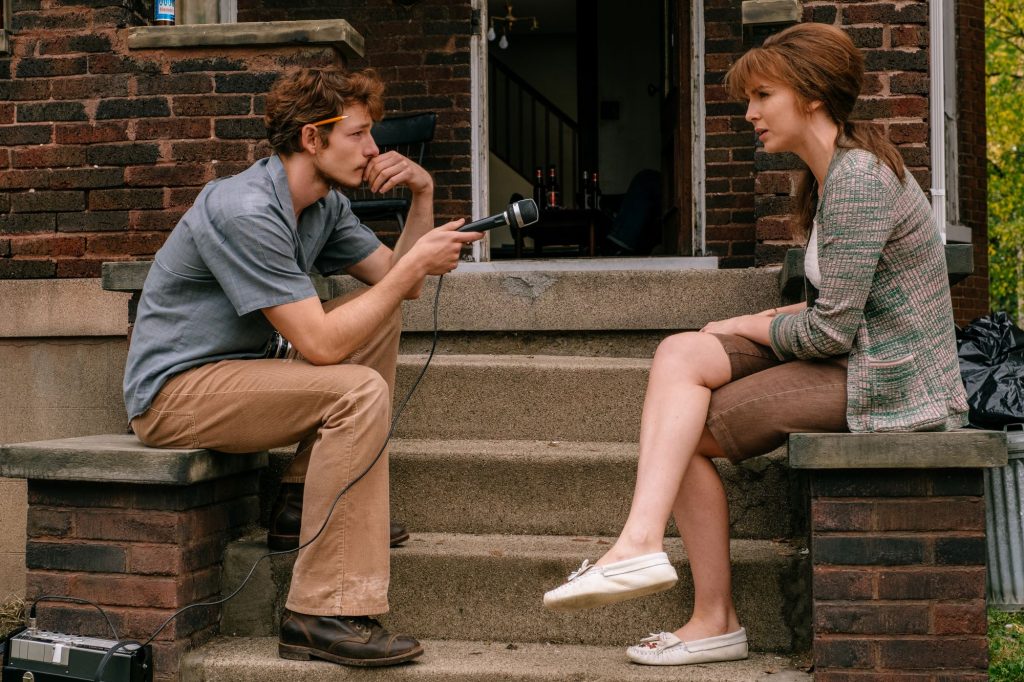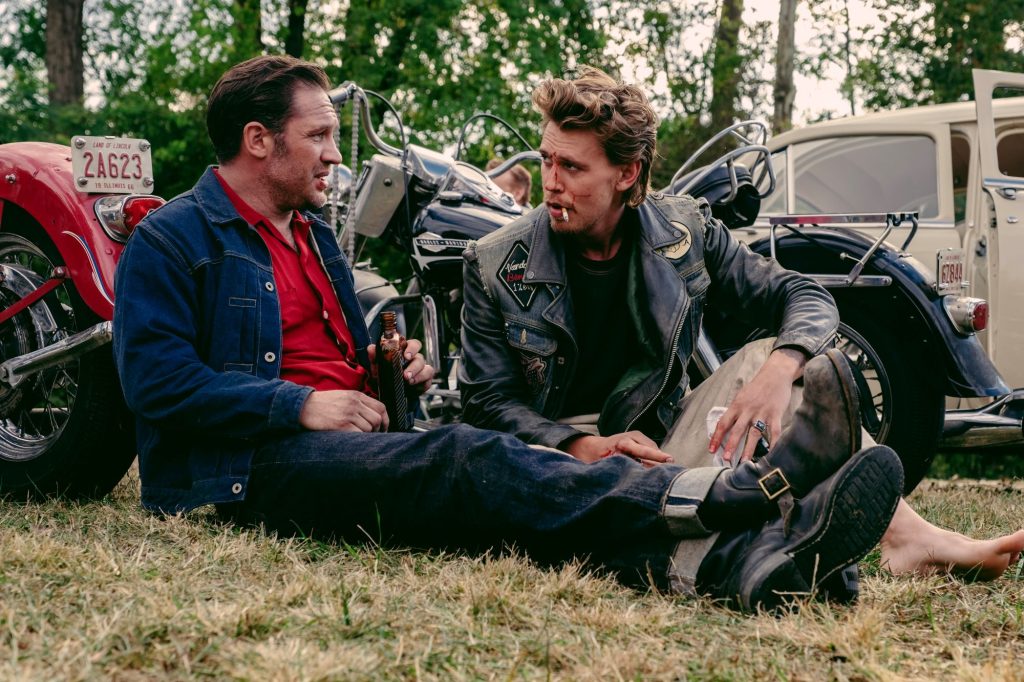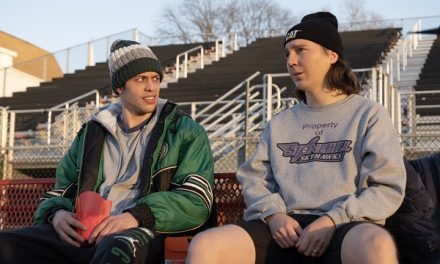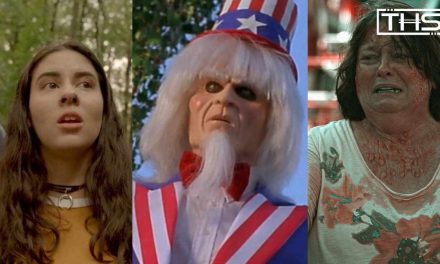Whether or not you actually ride, there’s nothing quite like the aesthetic of motorcycles — something The Bikeriders fundamentally understands.
The film comes from writer/director Jeff Nichols, who drew inspiration from Danny Lyon’s book of photography to immerse audiences in the look, feel, and sounds of ‘60s motorcycle subculture. And The Bikeriders very much succeeds in that regard, transporting us to a time and a community where nothing matters so much as the colors you wear and the bike you ride.
At the beginning of the film, we meet Austin Butler’s Benny in a bar. Two locals approach him, demanding he remove his Chicago Vandals jacket.
“You’d have to kill me to get this jacket off,” Benny replies.
They nearly do, but threats to his life don’t phase Benny. The only thing that really shakes him up is thinking he might be too injured to ride.
His wife Kathy (Jodie Comer) is more concerned about Benny getting jumped. But at the same time, she relays the story to Danny (Mike Faist) with a sort of resignation. Like Kathy, we’ll soon realize that riding means more to Benny than anything else.
As the years pass, Kathy describes the evolution of the motorcycle club run by Johnny (Tom Hardy); how a few guys who met up to race bikes turned into a formal club; how the club spread in popularity and new chapters popped up all over the Midwest; and how life in the Vandals ultimately devolved into something more sinister.

It makes sense that The Bikeriders was inspired by a book of photography, because it delivers quite a visual mood. The ambiance really sells this movie: the leather jackets, the roar of engines, the aggressively Midwestern accents, the fact that the bikers somehow always look grimy and greasy. Everyone is drinking or chain smoking cigarettes or getting in a fight or riding on a motorcycle. It is, in short, exactly what you want from a film about a ‘60s motorcycle club.
Still, while The Bikeriders excels in aesthetic, it stalls out a bit when it comes to character and story. Though the film chronicles the evolution of the Chicago Vandals’ club over a period of several years, it doesn’t do a great job exploring the people who are a part of it.
This is most true for Butler’s Benny, who speaks maybe a dozen times throughout the entire film and remains largely an enigma whose personality is simply “motorcycle”. If Ken’s job is beach, Benny’s job is bike. (Actually, can anyone tell me if Benny ever had a real job? How was he paying the club dues?)
Hardy’s Johnny makes for a compelling and convincing club leader — dangerous enough to be respected, level-headed enough to take care of business (or vice-versa). The film probably considers his character the most, but it still felt like just scratching the surface in the end. Johnny is meant to straddle two worlds, living as both a biker and a “regular” family man. I wish The Bikeriders had done something more with this interesting dynamic.

Meanwhile, Comer carries the film as Kathy, acting not just as the literal storyteller but as the audience’s ‘outsider’ perspective into the world of the club. Much like Benny and Johnny, I still wished for more insight into her character. But Comer undoubtedly continues to remind us why she’s a star in this role.
In the end, The Bikeriders is big on vibes, but not so much on story or character. The performances and visuals, with their uniquely 60s biker aesthetic, keep it an appealing watch. However, its inability to shift gears from exploring the club’s structure to exploring the people who would die for it keeps the film from making a greater mark. It’s not quite a triumphant ride off into the sunset, but it’s still a journey worth taking.
The Bikeriders premieres in theaters June 21.

![The Bikeriders: Flawless Vibes, Middling Story [Review]](https://thathashtagshow.com/wp-content/uploads/2024/06/The-Bikeriders-review-1280x640.png)
![“Hypnotic” – A Messy Psychological Thriller [REVIEW]](https://thathashtagshow.com/wp-content/uploads/2021/10/246203586_621877155650033_8371231198556416892_n-440x264.png)


